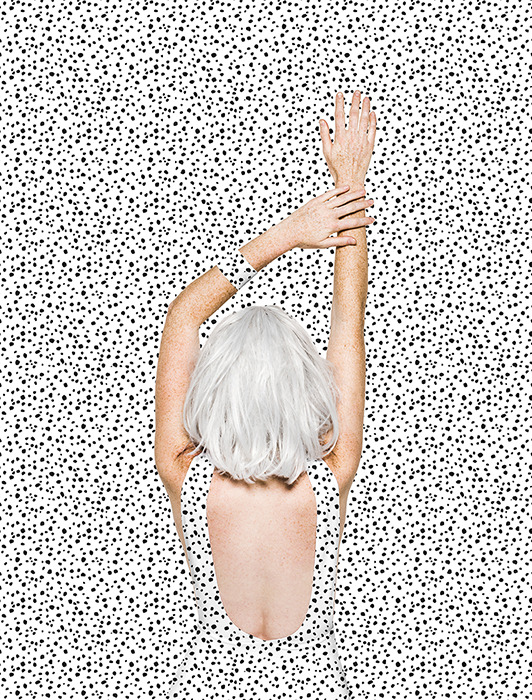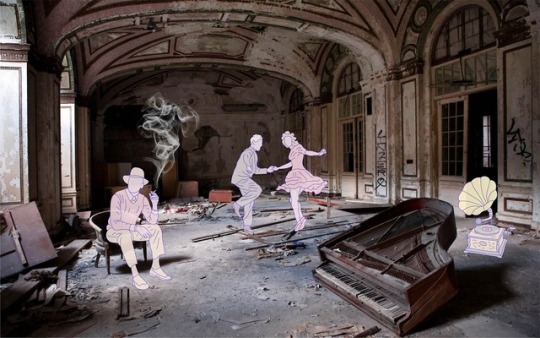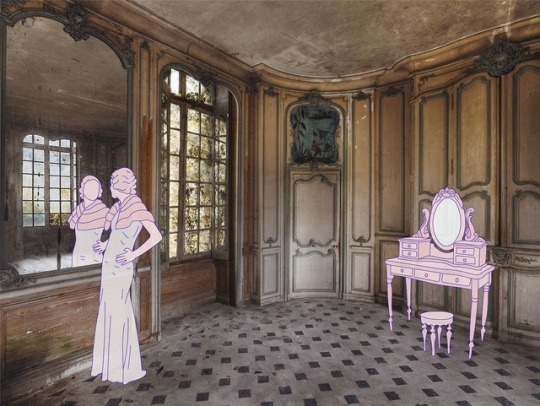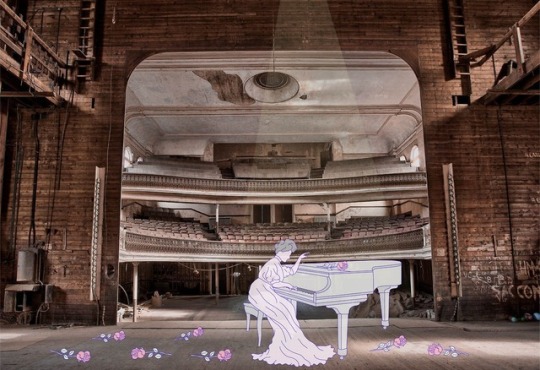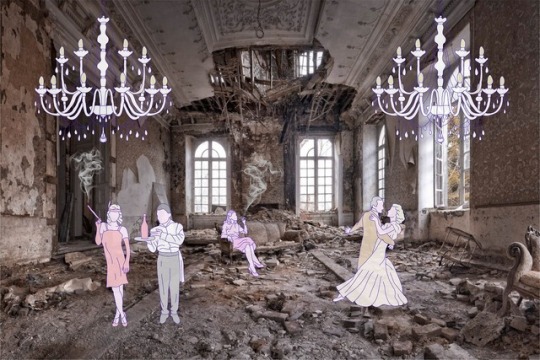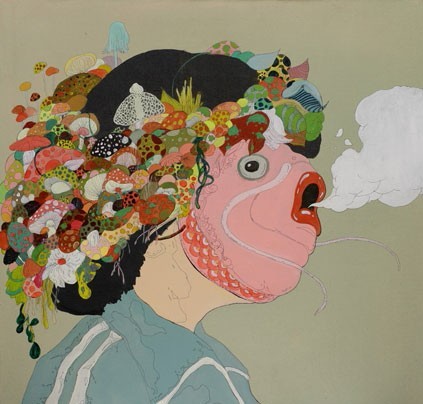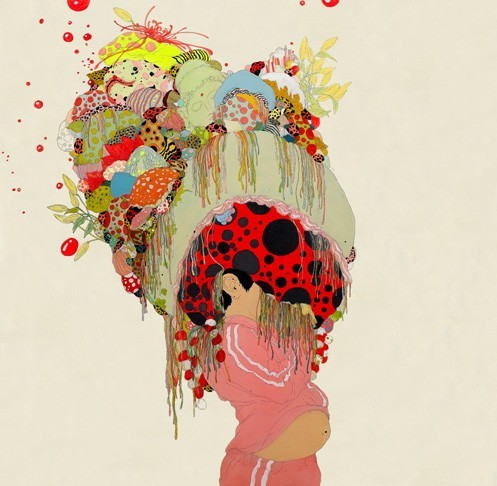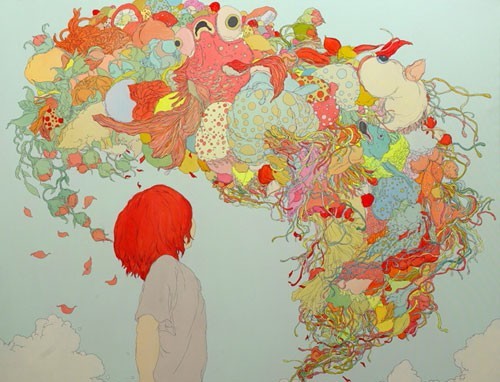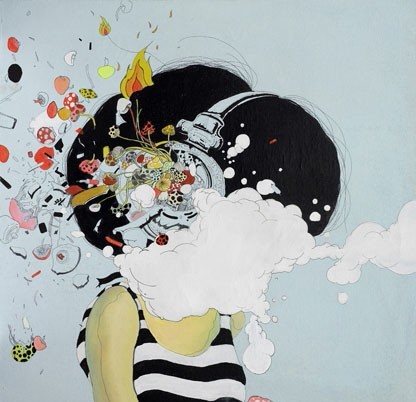Life lessons from the kid that definitely has it all figured out...
Don't wanna be here? Send us removal request.
Text
FREE MEDICAL PDFs
Anatomy:
1–> KLM for Gross Anatomy
2–> Snell’s Anatomy
3–> BD Churassia
4–> RJ Last
5–> Grey’s Anatomy
6–> Langman Embryology
7–> KLM for Embryology
8–> BD For General Anatomy
9–> Dissector
10–> Di Fore Histology
11–> Junqueira’s Histology
12–> Netter Atlas of human Aantomy
Folder link–> https://drive.google.com/open?id=0B3WdpdsqpX0LYV9KQ3lxY29FY28
Physiology:
1–> Guyton
2–> Ganong
3–> Sheerwood
4–> Sembulingam
Folder link–> https://drive.google.com/open?id=0B3WdpdsqpX0LdXlCSjdZM214dEE
Biochemistry:
1–> Harper
2–> Lippincott
3–> Chatterjea
4–> Satyanarayan
5–> Stryer
6–> MRS Biochemistry
Folder link–> https://drive.google.com/open?id=0B3WdpdsqpX0Ld0o3WnhCR2VEczg
Pathology:
1–> Big Robins
2–> Medium Robins
3–> Pathoma
4–> Goljan
5–> Harsh Mohan Pathology
6–> Atlas of Histopathology
7–> Levinson
8–> MRS microbiology
9–> Microbiology by Jacquelyn G. Black
10–> Color Atlas of Microbiology
11–> Kaplan Pathology
Folder link–> https://drive.google.com/open?id=0B3WdpdsqpX0LYkRYdjFrTm5MR0U
Pharmacology:
1–> Big Katzung
2–> Mini Katzung
3–> Kaplan Review
4–> Lippincott
5–> Pocket Katzung
6–> Rang and Dale’s Pharmacology
7–> Atlas of Pharmacology
Folder link–> https://drive.google.com/open?id=0B3WdpdsqpX0LMkE1UUVRZGwtTlU
Forensic Medicine:
1–> Simpson’s Forensics
2–> Krishan’s Forensics
3–> Atlas of Autopsy
4–> Atlas of Forensic Medicine
Folder link–> https://drive.google.com/open?id=0B3WdpdsqpX0LQXVwOGoyWnFSV2s
Ophthalmology:
1–> Jogi
2–> Jatoi
3–> Parson’s Textbook of Eye
4–> Kanski
5–> AK Khurana
6–> Atlas of ophthalmology
Folder link–> https://drive.google.com/open?id=0B3WdpdsqpX0LOHc5WVZMdkJjX2M
Otorhinolaryngology:
1–> Dhingra
2–> Logans Turner
3–> Color Atlas of Otorhinolaryngology
4–> Maqbool’s Text Book of ENT
5–> Clinical Methods in ENT by PT Wakode
6–> ENT at a Glance
Folder link–> https://drive.google.com/open?id=0B3WdpdsqpX0LaDY2a0lFNDlfTGc
Community Medicine:
1–> Monica’s Text Book Community Medicine
2–> Mahajan And Gupta Text Book of Community Medicine
3–> Bancroft’s Text Book of Community Medicine
Folder link–> https://drive.google.com/open?id=0B3WdpdsqpX0Lc1RCMml2NjhFNjA
Internal Medicine:
1–> Churchill’s Pocketbook of DD
2–> MTB Step 2 Ck
3–> Davidson Essentials
4–> Davidson Principals and practice
5–> Harrison’s Internal Medicine
6–> Internal Medicine USMLE Nuggets
7–> Internal Medicine on call bt LANGE 8–> Oxfords Specialties
Folder link–>https://drive.google.com/open?id=0B3WdpdsqpX0LeEFJNG5TMlc4eWc
Surgery:
1–> Bailey_love short practice of Surgery
2–> Churchill’s pocketbook of Surgery
3–> Deja Review of surgery
4–> Farquharson’s Textbook of Operative General Surgery
5–> Hamilton Bailey’s Physical Signs
6–> Oxford Handbook of Clinical Surgery
7–> Schwartz’s Principles of Surgery
8–> Macleod’s Clinical Examination
9–> Macleod’s Clinical Diagnosis
Folder link–>https://drive.google.com/open?id=0B3WdpdsqpX0LRFpFSG5hZ1pVWkE
Obstetrics & Gynecology:
1–> Case Discussions in Obstetrics and Gynecology
2–> Deja Review of Obstetrics Gynecology
3–> Obstetrics by Ten Teachers
4–> Gynaecology illustrated
5–> Gynaecology by Ten Teachers
Folder link–>https://drive.google.com/open?id=0B3WdpdsqpX0LMU1LRjFDa1FrbjA
Pediatrics:
1–> Nelson Essentials of Pediatrics
2–> Nelson Complete
3–> Pediatrics Review
Folder link–>https://drive.google.com/open?id=0B3WdpdsqpX0LUkdTQkVuNV92Yzg
I hope this helps everyone, it’s not mine. But has been shared to me and I am sharing this with all of you.
11K notes
·
View notes
Photo
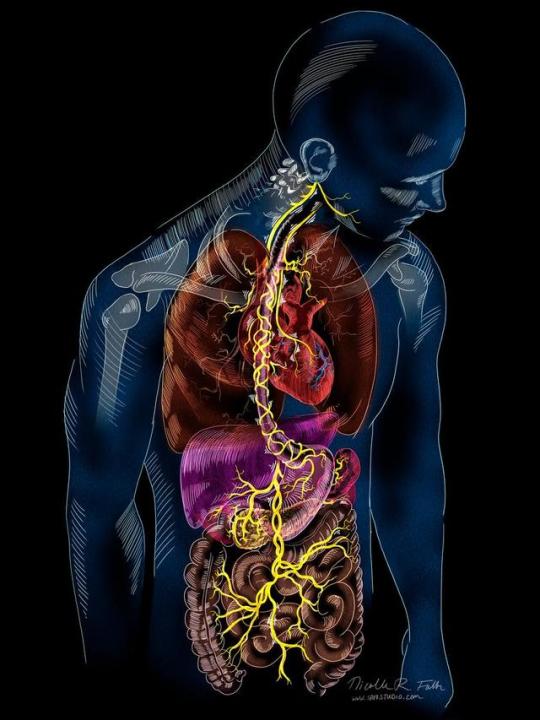
Your Gut Is Directly Connected To Your Brain, By A Newly Discovered Neuron Circuit
by Emily Underwood / Science
The human gut is lined with more than 100 million nerve cells, it’s practically a brain unto itself. And indeed, the gut actually talks to the brain, releasing hormones into the bloodstream that, over the course of about 10 minutes, tell us how hungry it is, or that we shouldn’t have eaten an entire pizza. But a new study reveals the gut has a much more direct connection to the brain through a neural circuit that allows it to transmit signals in mere seconds. The findings could lead to new treatments for obesity, eating disorders, and even depression and autism, all of which have been linked to a malfunctioning gut.
The study reveals “a new set of pathways that use gut cells to rapidly communicate with … the brain stem,” says Daniel Drucker, a clinician-scientist who studies gut disorders at the Lunenfeld-Tanenbaum Research Institute in Toronto, Canada, who was not involved with the work. Although many questions remain before the clinical implications become clear, he says, “This is a cool new piece of the puzzle.”
In 2010, neuroscientist Diego Bohórquez of Duke University in Durham, North Carolina, made a startling discovery while looking through his electron microscope. Enteroendocrine cells, which stud the lining of the gut and produce hormones that spur digestion and suppress hunger, had footlike protrusions that resemble the synapses neurons use to communicate with each other.
Read the entire article
Illustration above © Nicolle R. Fuller / Science Source
457 notes
·
View notes
Photo





Constanza Adonis - http://cositos.tumblr.com
6K notes
·
View notes
Photo





Sculptural Textile works by Faig Ahmed
you can also find me @mary_bu__
[& &]
1K notes
·
View notes
Text
Let Us See Jupiter Through Your Eyes

Our Juno spacecraft will fly over Jupiter’s Great Red Spot on July 10 at 10:06 p.m. EDT. This will be humanity’s first up-close and personal view of the gas giant’s iconic 10,000-mile-wide storm, which has been monitored since 1830 and possibly existing for more than 350 years.
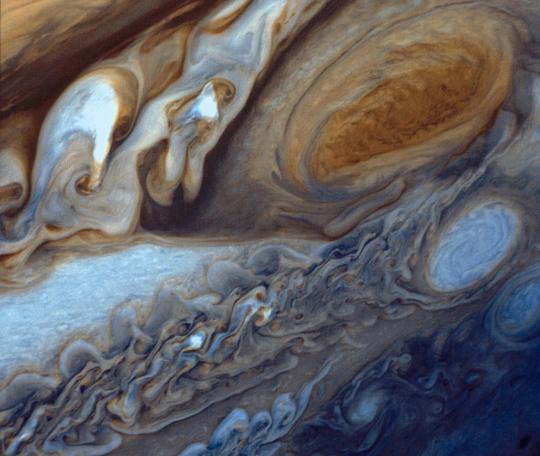
The data collection of the Great Red Spot is part of Juno’s sixth science flyby over Jupiter’s mysterious cloud tops. Perijove (the point at which an orbit comes closest to Jupiter’s center) will be July 10 at 9:55 p.m. EDT.
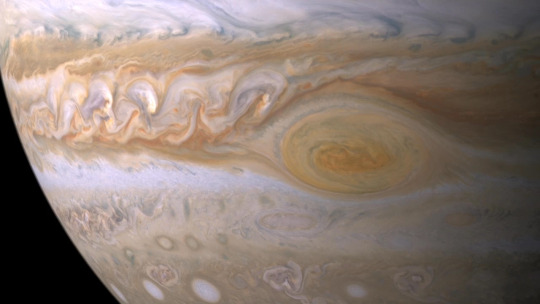
At the time of perijove, Juno will be about 2,200 miles above the planet’s cloud tops. Eleven minutes and 33 seconds later…Juno will have covered another 24,713 miles and will be directly above the coiling crimson cloud tops of the Great Red Spot. The spacecraft will pass about 5,600 miles above its clouds.
When will we see images from this flyby?
During the flyby, all eight of the spacecraft’s instruments will be turned on, as well as its imager, JunoCam. Because the spacecraft will be collecting data with its Microwave Radiometer (MWR), which measures radio waves from Jupiter’s deep atmosphere, we cannot downlink information during the pass. The MWR can tell us how much water there is and how material is moving far below the cloud tops.

During the pass, all data will be stored on-board…with a downlink planned afterwards. Once the downlink begins, engineering data from the spacecraft’s instruments will come to Earth first, followed by images from JunoCam.
The unprocessed, raw images will be located HERE, on approximately July 14. Follow @NASAJuno on Twitter for updates.
Did you know you can download and process these raw images?
We invite the public to act as a virtual imaging team…participating in key steps of the process, from identifying features of interest to sharing the finished images online. After JunoCam data arrives on Earth, members of the public can process the images to create color pictures. The public also helps determine which points on the planet will be photographed. Learn more about voting on JunoCam’s next target HERE.
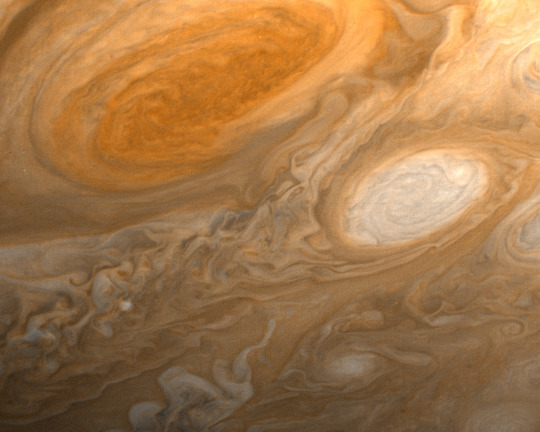
JunoCam has four filters: red, green, blue and near-infrared. We get red, green and blue strips on one spacecraft rotation (the spacecraft rotation rate is 2 revolutions per minute) and the near-infrared strips on the second rotation. To get the final image product, the strips must be stitched together and the colors lined up.
Anything from cropping to color enhancing to collaging is fair game. Be creative!
Submit your images to [email protected] to be featured on the Mission Juno website!
Check out some of these citizen-scientist processed images from previous Juno orbits:
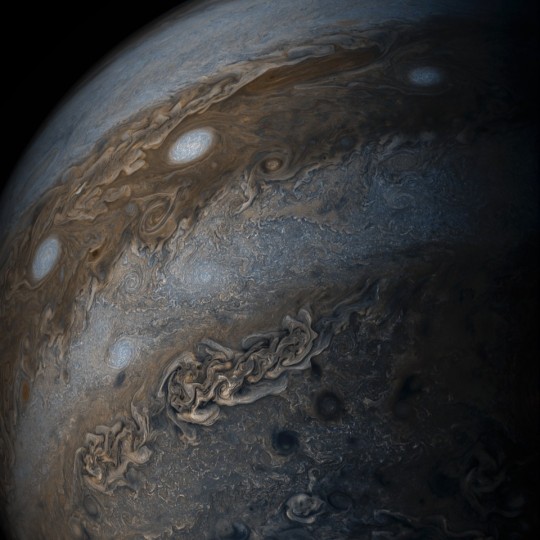
Credit: Sean Doran (More)
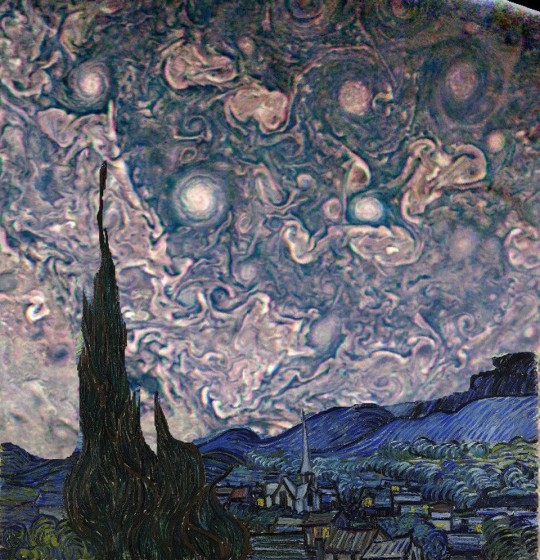
Credit: Amelia Carolina (More)
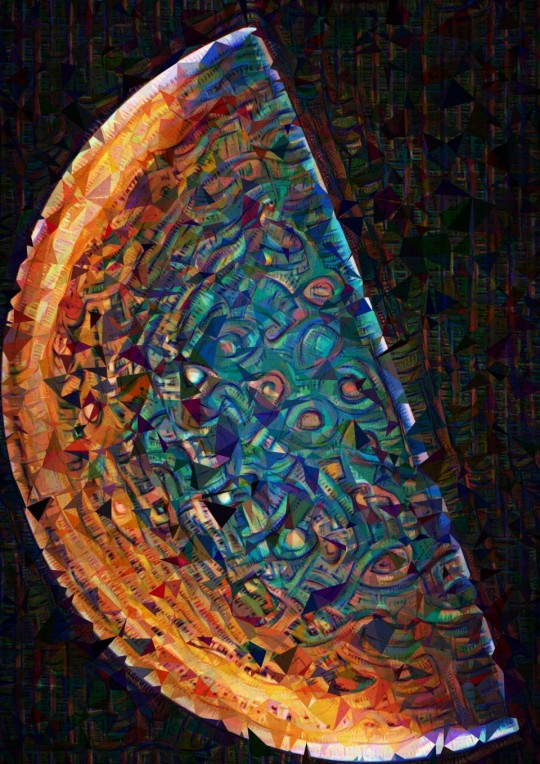
Credit: Michael Ranger (More)
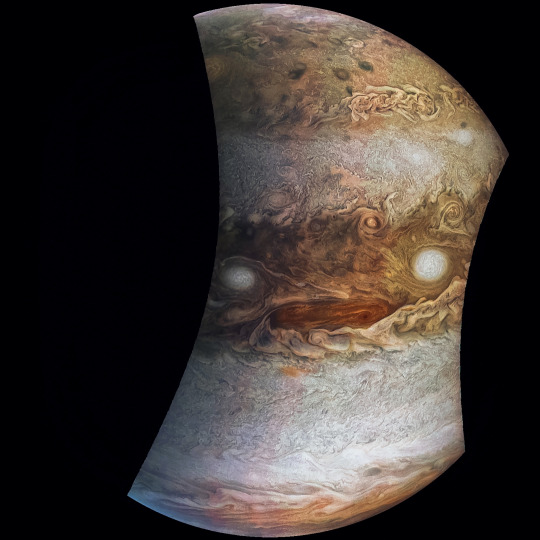
Credit: Jason Major (More)
Make sure to follow us on Tumblr for your regular dose of space: http://nasa.tumblr.com
4K notes
·
View notes
Photo
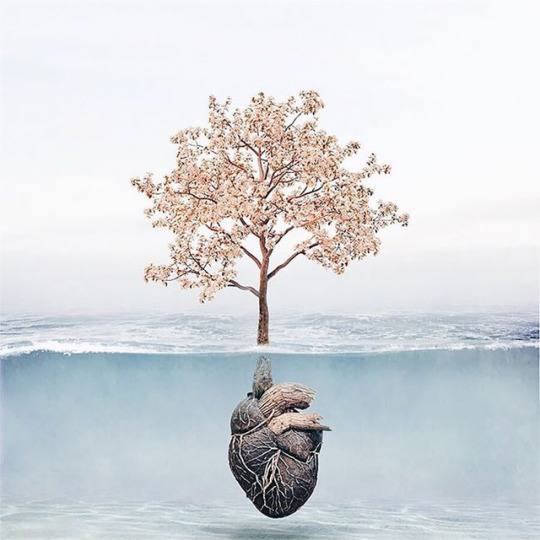
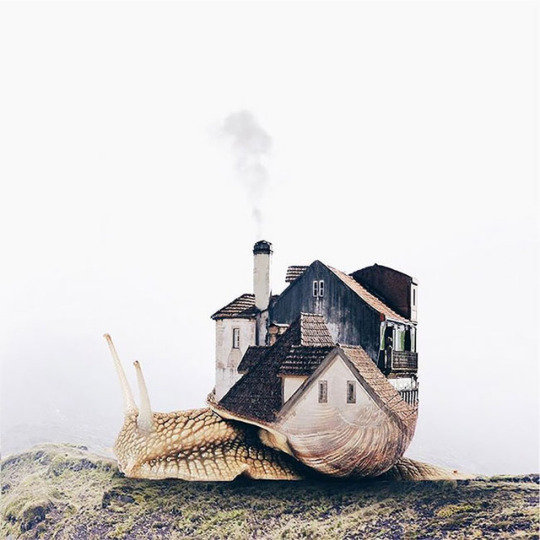
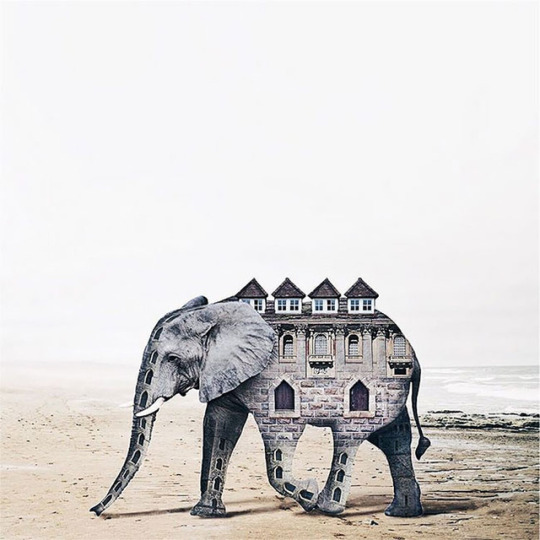

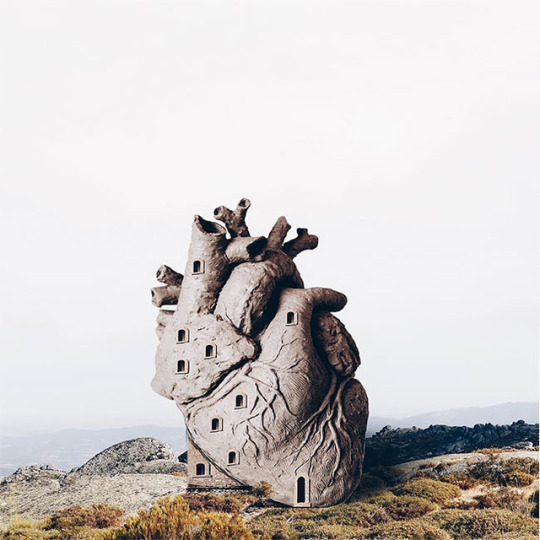
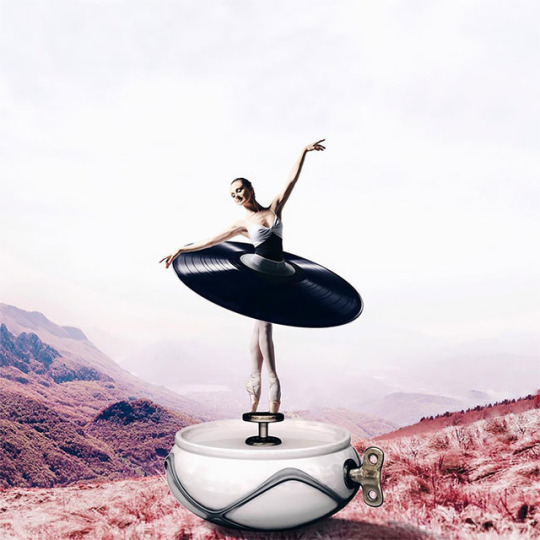
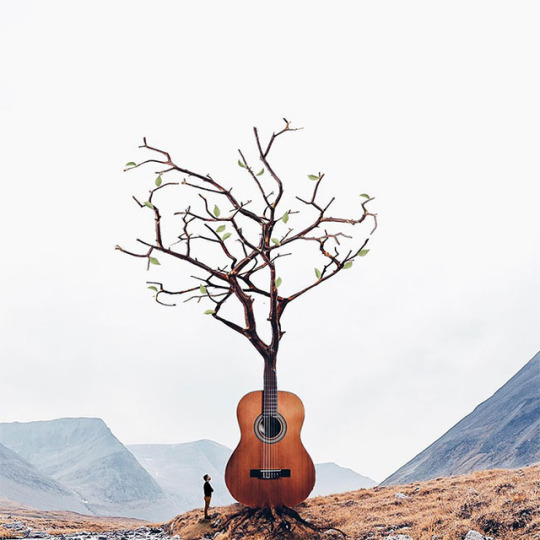

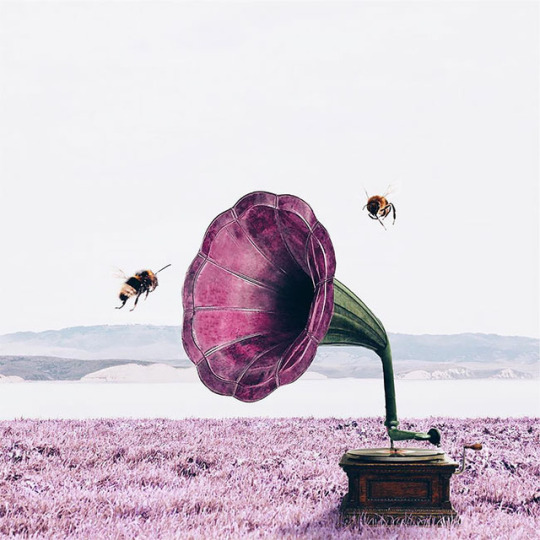
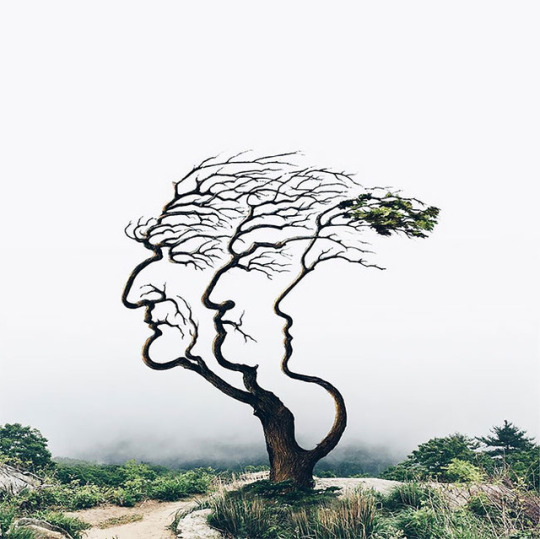
Portuguese Artist Luisa Azevedo Creates Dreamy And Surreal Photo Manipulation
818 notes
·
View notes
Text
Fun with a neural net that transforms line drawings to cats
So there’s a neural network framework called pix2pix that can be trained to learn how to transform one type of image into another. It’s been used for example to convert satellite images into line drawings and vice versa (think Google maps satellite view vs the one that show boxes where all the buildings are). There’s also trained version of pix2pix that converts a block drawing to a building facade (although it tends to make the building facades into creepy post-apocalyptic burnt-out shells).
Less useful but arguably even more creepy is the version by Christopher Hesse that turns line drawings into cats.
He trained it on about 2000 stock photos of cats that he ran through an edge-detection filter - he used the edge-detected (line drawing) versions as the starting image, and the original image as the ending image. The neural network then learned to convert from the line drawings into the original cat photographs.
The result? A neural network that tries to make ANY line drawing into a photo of a cat. And, gloriously, you can play with it in your browser here. Here are some results I’ve produced.
Here, it was able to turn my primitive trackpad-drawn scribble into a furry cat, complete with fluffy underbelly. Not bad, neural network.

But, if required, the neural network can make do with less. The results get increasingly creepy, though.

The neural network has not been trained on roosters. The network has only been trained on cats. 12/10 Excellent bright-eyed cat. Would stroke its strange furry head-crest.

This is a strange grabby cat, but at least the neural network has identified the eyes.

Ears? Check. Eyes? Check. Fluffy underbelly? Check. Next!

8K notes
·
View notes
Video
I could watch this forever! So cool and soothing.
youtube
Computer Animation, Digital Art, Motion Graphics – Mesmerizing and Set to Oh Wonder
Some of Alberto Seveso’s amazing works set to the Oh Wonder’s music The Rain.
More magic HERE. Posted by Lisa.
67 notes
·
View notes
Text
Allergy Season Explained
Happy First Day of Spring, Tumblr!
What better way to celebrate than to **ACHOO!!**….wait, what were we saying?
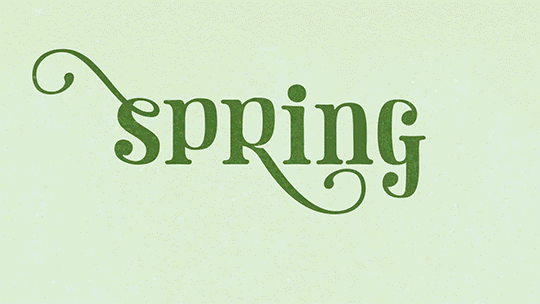
Ah, spring! Grass growing, flowers blooming, trees growing new leaves, but if you get allergies, this explosion of new life probably inspires more dread than joy.
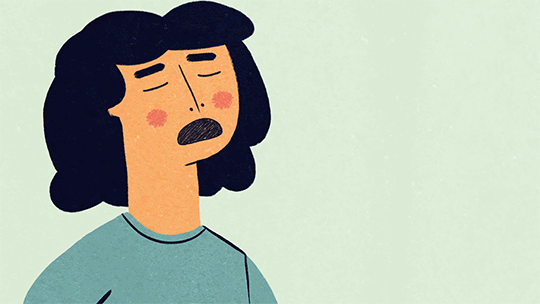
Step outside, and within minutes, you’re sneezing and congested. Your nose is running, your eyes are swollen and watery, your throat is itchy. For you and millions of others, it’s seasonal allergy time. So what’s behind this onslaught of mucus?

The answer lies within you. It’s your immune system. Seasonal allergies, also called hay fever, or allergic rhinitis, are a hypersensitive immune response to something that’s not actually harmful. Pollen from trees and grass, and mold spores from tiny fungi find their way into your mucous membranes and your body attacks these innocuous travelers the same way it would infectious bacteria.
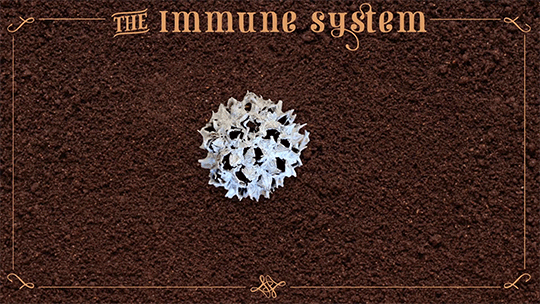
The immune system has a memory. When a foreign substance gets tagged as threatening, white blood cells produce customized antibodies that will recognize the offender the next time around. They then promptly recruit the body’s defense team. But sometimes, the immune system accidentally discriminates against harmless substances, like pollen. When it wafts in again, antibodies on the surface of white blood cells recognize it and latch on.

This triggers the cell to release inflammatory chemicals, like histamine, which stimulate nerve cells, and cause blood vessels in the mucous membranes to swell and leak fluid. In other words, itchiness, sneezing, congestion, and a runny nose.

Allergies usually, but not always, show up for the first time during childhood. But why do some people get allergies and others don’t? Allergies tend to run in families, so genetics may be one culprit. In fact, errors in a gene that helps regulate the immune system are associated with higher rates of allergies. The environment you grow up in matters, too. Being exposed to an allergen as a baby makes you less likely to actually develop an allergy to it. People who grow up on farms, in big families, and in the developing world also tend to have fewer allergies, although there are plenty of exceptions, partly thanks to genetics. One theory is that as children, they encounter more of the microbes and parasites that co-evolved with traditional hunter-gatherer societies.

Called the hygiene hypothesis, the idea is that when the immune system isn’t exposed to the familiar cast of microbes, it’ll keep itself busy mounting defenses against harmless substances, like pollen. Another theory is that an immune system toughened up by a barrage of pathogens is less likely to overreact to allergens. Pollen is a common offender, just because we encounter so much of it, but there’s a long list of substances: dust, animal dander, insect venom, medications, certain foods, that can send your immune system into overdrive. Some of these reactions can be scary. An allergy can develop into full-blown anaphylaxis, which typically brings on severe swelling, shortness of breath, and very low blood pressure. It can be deadly.
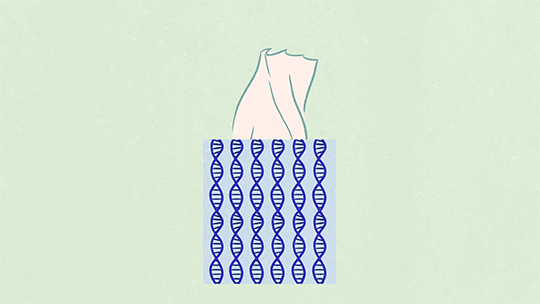
But as we who suffer from seasonal allergies know, even non-life threatening allergy symptoms can make you miserable. So what can you do about it? Medications can help reduce the symptoms. The most common ones keep histamines from binding to your cells. These antihistamines stop the inflammation response. Steroids can help dial down the immune system. Another more permanent option is immunotherapy. Deliberate, controlled exposure to gradually increasing amounts of an allergen can teach the immune system that it isn’t dangerous after all.

Of course, you can always just wait your seasonal allergies out. The spring pollen onslaught dwindles by mid-summer…just in time for ragweed season!
From the TED-Ed Lesson Why do people have seasonal allergies? - Eleanor Nelsen
Animation by TED-Ed
722 notes
·
View notes
Photo





More: Magnificent Cardboard Airships by Jeroen van Kesteren
1K notes
·
View notes
Text
JJ Virgin Diet Day 3 and Food Log
Today was for all intents and purposes a great diet day! I woke up without a headache today which was a major accomplishment.
My smoothie was also a big success this morning. It was not delicious, but it was certainly tolerable. I added dates, walnuts and upped the cocoa powder. Amount of protein powder and and fiber stayed the same, (1 scoop and 1 tsp respectively).
For lunch I had some more of my chicken quinoa mix. I also had some almonds and pistachios for snack. Of course, I still had my venti Sbux coffee.
I think it's possible that my knees may hurt less, but my back is still sore. I need to get an adjustment tomorrow for real.
Sadly, my teeth are still really sore from biting into a pistachio thinking it was an almond yesterday.
Another exciting element is that I had lost 3 lbs when I weighed myself this morning.
Dinner I made a really yummy fake chicken alfredo with more roasted asparagus. The alfredo was actually made by creaming cauliflower and using nutritional yeast.
Not sure what i'm going to cook tomorrow. I've got at least three meals worth of left overs though, so I may not cook tomorrow. I am going to see a show too, so maybe I'll skip cooking tomorrow and do something on Friday!
0 notes
Text
JJ Virgin Diet Day 2 and Food Log
So I woke up feeling particularly miserable this morning. I don't know if it was the prospect of drinking another one of those fucking terrible smoothies or if it was just the general malaise of another day on a diet. I did not bound out of bed beaming with mental clarity either, the way the diet book makes it sound like you will. And... to make things even more bright and cheery? It was raining and my all-day headache was still with me from yesterday.
As it turned out, the smoothie was a little bit better this morning. I used a mix of almond milk and coconut, more fruit, less fiber and the same amount of protein powder. I also kicked in a teaspoon of cocoa powder. I think that really helped it more than anything. I don't necessarily want a chocolate shake, but sweet heavens, it's better than the taste of that terrible shit before.
Today, I thought better of bringing snacks. I had a yummy Fuji apple as well as a bag full of almonds and pistachios. I'm really thankful I did bring snacks, because I had my smoothie around 8:30 this morning, and I was hungry by 11. I ate my apple. Then I ate some nuts. Around 1:30 or 2, I ate more nuts. When I got home from class, around 3, I ate some roasted chicken and dipped it in spicey hummus.
For dinner, I had roasted asparagus, (which is basically the food of the gods) and a really weird but not bad tasting concoction of sautéed chicken, red bell pepper, mushrooms, onion, garlic and I mixed all of that in with some quinoa. The chicken and veggies were well seasoned, but the quinoa was super bland. I think it would have been super delicious with some soy sauce or teriyaki. I feel like I started basically channeling a stir-fry of some sort. Oh well, I've got it to eat tomorrow for lunch.
Finishing the evening with more water and two squares of dark chocolate.
Lastly, I know this is supposed to be about inflammatory foods, and my knees have been oddly sore for the last month or so. They're still sore today, and my back hurts a little. I think I'll try to get adjusted tomorrow or the next day. Maybe that will help. And maybe this diet will make my knees feel better. Here's to hopin'!
1 note
·
View note

